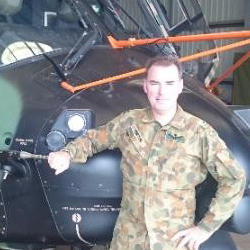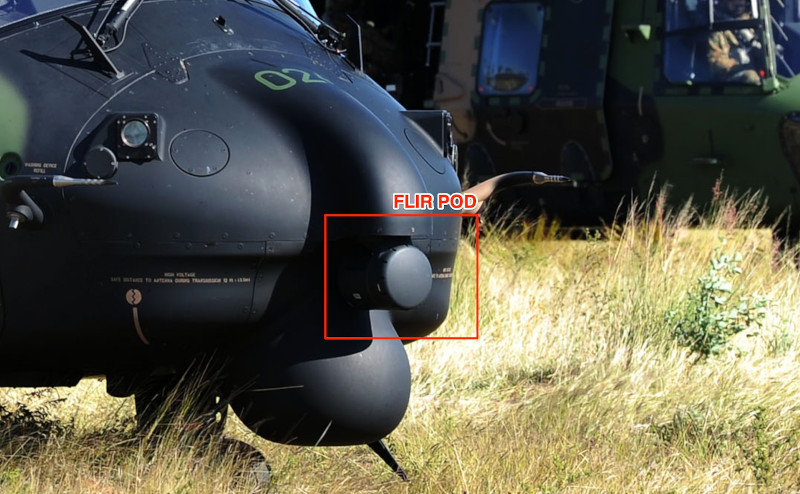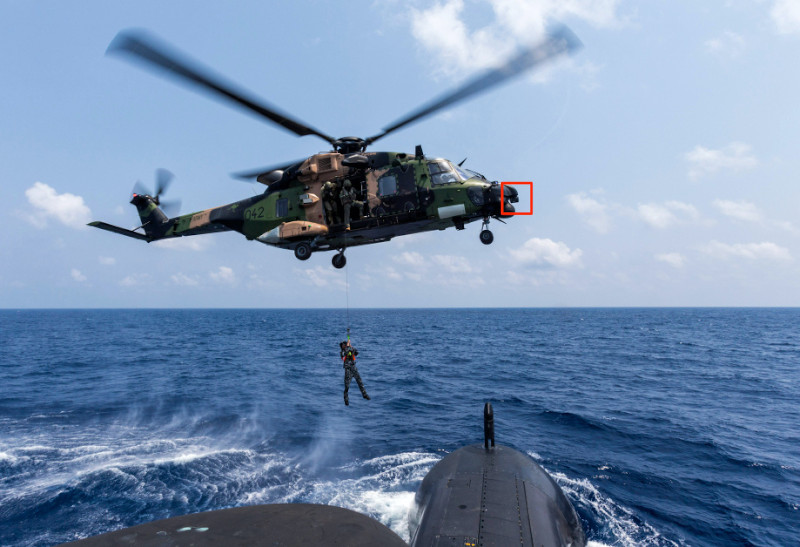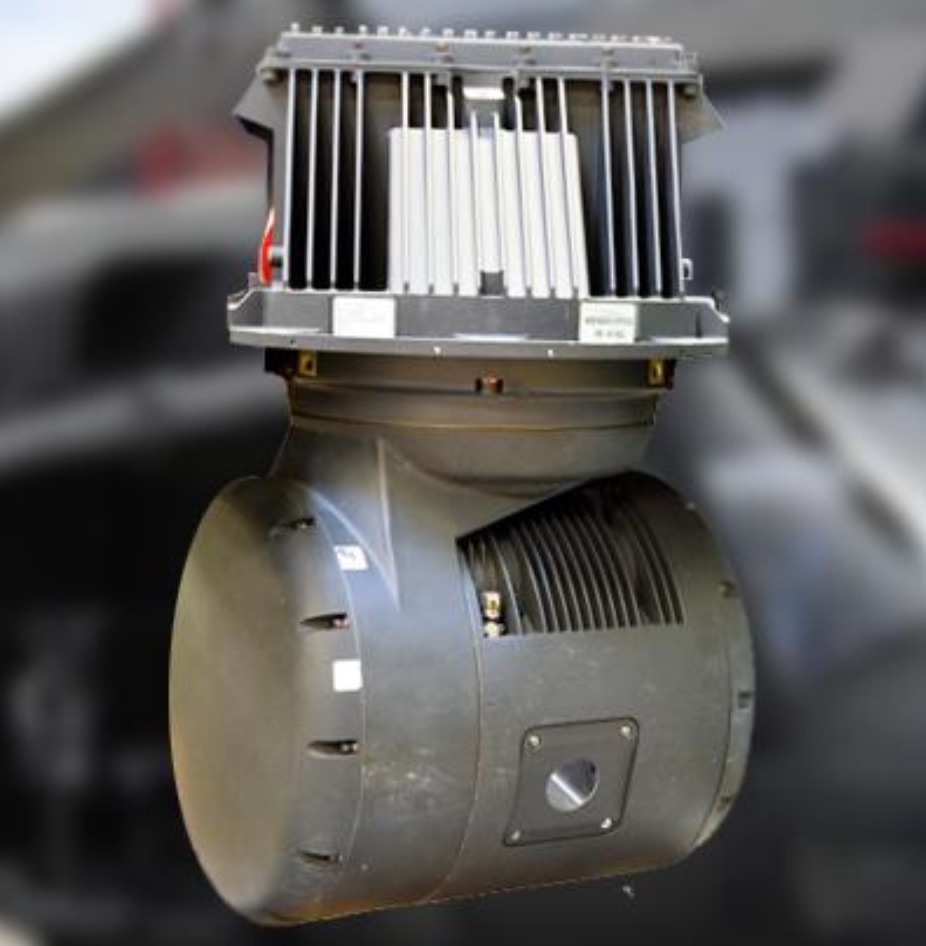使用Player FM应用程序离线!
RWS 84 – Pilotage FLIR with Tony ‘Squid’ Norton
已归档的系列专辑 ("不活跃的收取点" status)
When?
This feed was archived on February 13, 2024 11:08 (
Why? 不活跃的收取点 status. 我们的伺服器已尝试了一段时间,但仍然无法截取有效的播客收取点
What now? You might be able to find a more up-to-date version using the search function. This series will no longer be checked for updates. If you believe this to be in error, please check if the publisher's feed link below is valid and contact support to request the feed be restored or if you have any other concerns about this.
Manage episode 260235264 series 169835

Forward Looking Infra-red (FLIR) systems have been around for a while and used in a search or surveillance function normally by an operator with a control panel. A small number of aircraft are now incorporating FLIR as a pilot vision tool, tracked to the pilots head, as another way of seeing at night or through obscurants such as smoke or dust.
Tony is currently the senior aviation instructor and and standards pilot for Australian Army Aviation. He is approaching 20 years of military instructing and 10 years as a graduate of the National Test Pilot School in the US.
In Episode 82 Tony shared some of his experiences going through test pilot school and his career in the Army. In this episode we concentrate on the capability that FLIR provides and its use as ‘pilotage FLIR’ for extending the vision cues available to helicopter crews.
We also look at the specifics of how that plays out for pilots of the MRH90 ‘Taipan’ which is the Australian Army variant of the NHIndustries NH90.
FLIR is probably most easily explained in comparison to night vision devices. Where NVD/NVGs amplify visible light in dark settings FLIR devices work by detecting the heat given off by objects and the variation between objects.

The wavelength of infrared that thermal imaging cameras detect is 3 to 12 μm and differs significantly from that of night vision, which operates in the visible light and near-infrared ranges (0.4 to 1.0 μm).
-Wikipedia
It’s surprisingly difficult to find good demonstration images for the FLIR output online however there are a number of videos here below on the page that give an idea of the capability.
Along with the FLIR pod, the other major difference for the MRH90 install is the TopOwl helmet. The aircraft can track the motion of the helmet to know where the pilot is looking. This is used to drive the FLIR pod to align with the pilots sight rather than a controller using a manual joystick. Integral to the TopOwl helmet is the projection system which allows NVD or the FLIR image to be superimposed in front of the pilot’s vision – allowing the pilot to look through the image and select between the different input as well as overlay HUD information.

One interesting effect of that is that the pilot can look ‘through’ the cockpit instrument panel or the floor to where the FLIR sensor is pointing as it has an unobstructed picture from outside the aircraft.
The technology brings with it a number of human factors considerations that crews need to train for and work through during a flight. Two quick examples are that only one pilot can steer the sensor and see the FLIR image on their visor at a time (different visual information between pilots and also crew in the rear) and that the eye point of the pilot is now no longer from their own head position but from the front of the aircraft.
Podcast: Subscribe in iTunes | Play in new window | Download
Links from this week’s episode:
Support the podcast on Patreon

Have a comment or feedback about Episode 84? Maybe you have some great tips of your own that others can benefit from. Be part of the conversation by leaving a comment below.
The post RWS 84 – Pilotage FLIR with Tony ‘Squid’ Norton appeared first on The Rotary Wing Show Podcast.
112集单集
已归档的系列专辑 ("不活跃的收取点" status)
When?
This feed was archived on February 13, 2024 11:08 (
Why? 不活跃的收取点 status. 我们的伺服器已尝试了一段时间,但仍然无法截取有效的播客收取点
What now? You might be able to find a more up-to-date version using the search function. This series will no longer be checked for updates. If you believe this to be in error, please check if the publisher's feed link below is valid and contact support to request the feed be restored or if you have any other concerns about this.
Manage episode 260235264 series 169835

Forward Looking Infra-red (FLIR) systems have been around for a while and used in a search or surveillance function normally by an operator with a control panel. A small number of aircraft are now incorporating FLIR as a pilot vision tool, tracked to the pilots head, as another way of seeing at night or through obscurants such as smoke or dust.
Tony is currently the senior aviation instructor and and standards pilot for Australian Army Aviation. He is approaching 20 years of military instructing and 10 years as a graduate of the National Test Pilot School in the US.
In Episode 82 Tony shared some of his experiences going through test pilot school and his career in the Army. In this episode we concentrate on the capability that FLIR provides and its use as ‘pilotage FLIR’ for extending the vision cues available to helicopter crews.
We also look at the specifics of how that plays out for pilots of the MRH90 ‘Taipan’ which is the Australian Army variant of the NHIndustries NH90.
FLIR is probably most easily explained in comparison to night vision devices. Where NVD/NVGs amplify visible light in dark settings FLIR devices work by detecting the heat given off by objects and the variation between objects.

The wavelength of infrared that thermal imaging cameras detect is 3 to 12 μm and differs significantly from that of night vision, which operates in the visible light and near-infrared ranges (0.4 to 1.0 μm).
-Wikipedia
It’s surprisingly difficult to find good demonstration images for the FLIR output online however there are a number of videos here below on the page that give an idea of the capability.
Along with the FLIR pod, the other major difference for the MRH90 install is the TopOwl helmet. The aircraft can track the motion of the helmet to know where the pilot is looking. This is used to drive the FLIR pod to align with the pilots sight rather than a controller using a manual joystick. Integral to the TopOwl helmet is the projection system which allows NVD or the FLIR image to be superimposed in front of the pilot’s vision – allowing the pilot to look through the image and select between the different input as well as overlay HUD information.

One interesting effect of that is that the pilot can look ‘through’ the cockpit instrument panel or the floor to where the FLIR sensor is pointing as it has an unobstructed picture from outside the aircraft.
The technology brings with it a number of human factors considerations that crews need to train for and work through during a flight. Two quick examples are that only one pilot can steer the sensor and see the FLIR image on their visor at a time (different visual information between pilots and also crew in the rear) and that the eye point of the pilot is now no longer from their own head position but from the front of the aircraft.
Podcast: Subscribe in iTunes | Play in new window | Download
Links from this week’s episode:
Support the podcast on Patreon

Have a comment or feedback about Episode 84? Maybe you have some great tips of your own that others can benefit from. Be part of the conversation by leaving a comment below.
The post RWS 84 – Pilotage FLIR with Tony ‘Squid’ Norton appeared first on The Rotary Wing Show Podcast.
112集单集
所有剧集
×欢迎使用Player FM
Player FM正在网上搜索高质量的播客,以便您现在享受。它是最好的播客应用程序,适用于安卓、iPhone和网络。注册以跨设备同步订阅。




